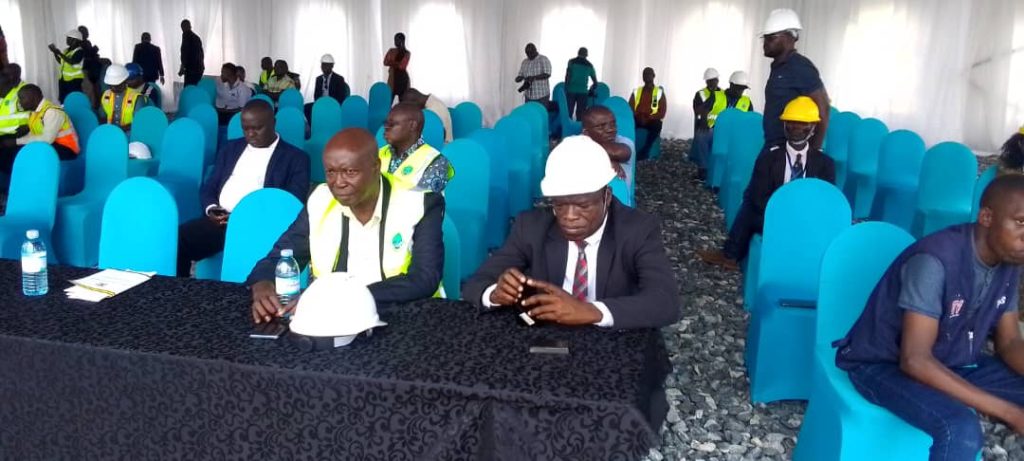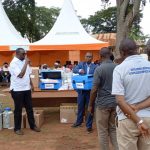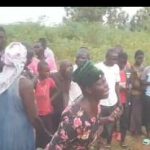By Mike Rwothomio
From decades of turbulent electricity, to projected reliable electricity, the majority of the over 3 million people of West Nile have reasons to smile after getting connected to the national grid.
The potential Gulu-Olwiyo 132 kV line portion of the Kole-Gulu-Nebbi-Arua Project completed last week formally extended the transmission grid to the west Nile sub region.
According to the ministry of energy and mineral development, West Nile now has 90 mw of the Gulu-Olwiyo 132 kV line portion of the Kole-Gulu-Nebbi-Arua project with only 6 mw electricity demand.
Though the demand is projected to increase to 10 mw in 12 months’ time, experts from the ministry say there is need “to find a way to grow electricity demand in the area”
President Yoweri Kaguta Museveni, whilst commissioning the project at Thatha cell, Thatha division, Nebbi municipality on August 3, 2024, emphasized the need for establishment of more industrial parks in the region to consume the abundant power.

“we now have enough power in the granary, therefore what I will recommend is to develop industrial park somewhere in west Nile near the power”
He also advised leaders to “get some land where the industrial park can be established to consume the 90 megawatts”.
Mr. Museveni added that the project has fulfilled the government commitment of serving the people of west Nile “proving that the argument of people that we have neglected west Nile were disruptive”.
He further stressed the need for export of the electricity to the neighboring countries like South Sudan, DR Congo amongst others “to attract factories confidently”
President Yoweri Kaguta Museveni has emphasized the need for development of more industrial Park in west Nile for maximum utilization of the newly commissioned Gulu-Olwiyo 132 kV line portion of the Kole-Gulu-Nebbi-Arua Project extending the transmission grid to west Nile sub region.
If the 132kV is not maximally consumed, the government will start to incur other costs of managing the voltage since the distance between the line and the ground generates an over voltage.
The ministry of energy and mineral development has apparently invested in little more equipment on the transformers and substations at Arua and Kole to sink power that may be lying idle.
The long awaited World Bank funded project cost us $ 638 (shs 2 trillion) according to permanent secretary ministry of energy and mineral development, Eng. Irene Batebe.
She added that the national launch of the Electricity Access scale-up project will increase access of electricity energy at household level, commercial enterprises, industrialization, public institutions amongst others, further commending the World Bank for funding the project, assuring that “we will be making additional projects to ensure our people are fully connected”
The 132kv line portion has put to bed the years of turbulent power in the sub region with the population of over 3 million people from the fourteen districts of Zombo, Nebbi, Nebbi municipality, Pakwach, Madi-OKolo, Terego, Maracha, Obongi, Yumbe, Koboko, Moyo, Adjumani, Arua city and Arua district.
West Nile leaders reacts
Jackeline Opar, the LCIII Chairperson of Thatha division who double as the Dean of Association of LCIII in Nebbi, lauds government for fulfilling its long term commitment to the west Nile people further appealing for “connection of more areas in the division’’
She added that “power is important but we have a big problem of road, we pray that the president hear our prayers”
The LCV chairperson of Nebbi district Emmanuel Orombi, commended the government for the great millstone, calling for connection of more sub counties in the district.
He also noted that in the past months, there has been improvement in power supply as compared to the previous years.
“We thank government for this initiative but honorable minister, we are drawing to your attention that only 10% of our sub counties are connected with power, it is our prayers that all these other remaining sub counties and even the few that seems to be connected, power just pass through them like Akworo, Jupangira, Nebbi Municipality, Erussi with Parombo, the rest out of 16 are still living in darkness or using solar” Orombi said
The MP for Nebbi municipality Hashim Suleiman, appealed for more connections mentioning that “the municipality still falls short of connectivity despite housing the Nebbi Substation. most of our 46 different cells in Nebbi municipality need to be connected since it hosts the main substation”.
He also rallied residents to make maximum use of the power at their disposal to cause fundamental change in their livelihoods.
Meanwhile William Anyama, the LCV Chairperson of Moyo reminded the government about lack of key rural electrification components that has left out many parts of West Nile, appealing that “we have many sub county headquarters, schools, government institutions like health center IIIs which are not connected”.
He further stressed the need for better coordination between officials from the ministry of energy and local leaders revealing how on several occasions “technical staff from the ministry bypass local leaders whilst implementing important government projects thus creating confusion”
By 2040, the government of Uganda that still has power generation capacity of 2000mw plans to increase it 52,400 mw.
Though connected to the national grid, the West Nile sub-region still has some areas like Obongi district without power poles.
The minister of energy and mineral development Ruth Nankabirwa says the completion of the power project fulfills the constant demand the West Nile leaders have been pushing for years. She also commended the World Bank and development partners for their full support noting that “as Uganda, we are moving forward to energy transmission, but allow me say West Nile is on fire, because last time you put me on fire but now, I am turning back with result”.
She added “the consumers’ needs to be connected that is when we shall be talking business, the industries in Arua and those others coming up, in Nebbi, and those big town centers in the region are going to consume this electricity, the schools, health centers will consume this electricity and we shall be happy”
The minister further noted that, government ‘s standpoint is not to stop at the substation but to proceed with rural electrification calling for patience on rural connections. She assured of the soon completion of the 6.5 Mw Nyagak III power station in Zombo district, that will add on the already existing electricity in the region.
Responding to the rural connection demands made by different west Nile leaders, the minister calls for patience saying “we are not throwing these requests in the basket, we are moving ahead with them, specifically on Obongi district”
Meanwhile, a representative of the world bank country commissioner, expressed the organization’s support toward the scale-up intervention expressing hope that the established infrastructure will facilitate the expeditious implementation of many government programs in the region.
He added that “Our interventions are designed to respond to government policies including NDPIII, SDG7, and priority programs towards increase access to clean and modern energy”
According to the ministry, under the Electricity Access Scale-up Project, all customers within the radius of 90meters will benefit. The customers will require no pole or a pole service to be connected to electricity.



